When your needs as a producer become more sophisticated, you may find yourself reaching for headphones that need to be driven by a headphone amplifier. For example, the Beyerdynamic DT 990 PROs (250 ohms) are a good example. But is the Scarlett 2i2 good enough as a headphone amplifier?
As a headphone amplifier, the Scarlett 2i2 is sufficient as it has the power to drive headphones with an impedance of up to 200 ohms. If you’re using higher-impedance headphones like the 250 ohms Beyerdynamic DT 990 Pros, you’ll need a headphone splitter or amplifier to drive them to maximum volume.
Can You Use A Scarlett 2i2 As A Headphone Amp?
A lot of this depends on what you’re using the audio interface for. For example, if you’ve got a Scarlett 2i2 and a 250 ohms pair of headphones for music production/mixing, the Scarlett 2i2 will be sufficient.
Unless you monitor your music extremely loud, the 2i2 will work just fine. In my opinion, not having the ability to drive the headphones a bit louder is a minor inconvenience.
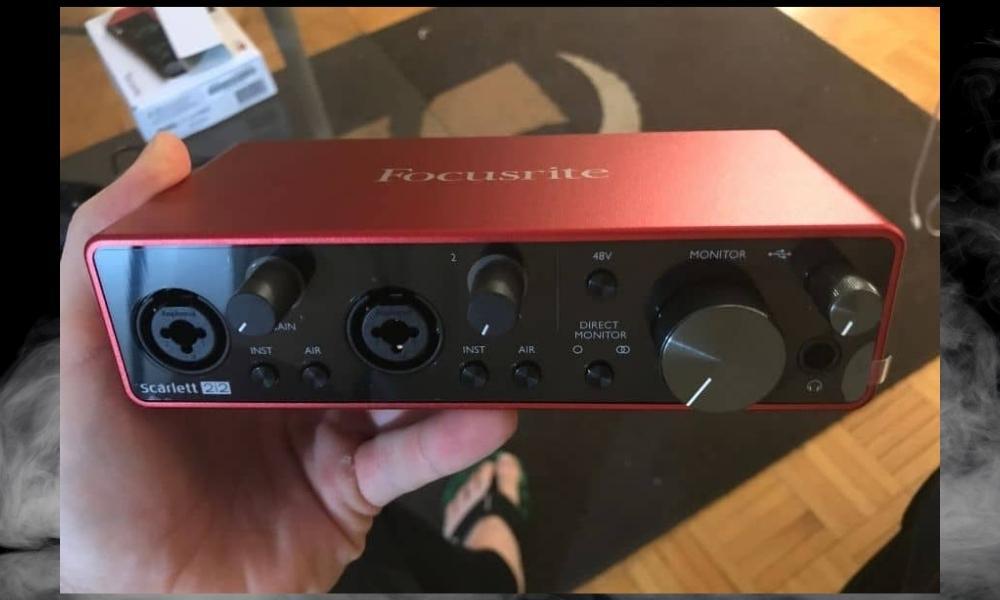
The Scarlett 2i2-3rd generation (my review – if you’re interested) has a maximum output level of 7dBU so it has enough power to drive most headphones. I know because I own a pair of the Beyerdynamic DT 990 Pros, and the Scarlett can drive them.
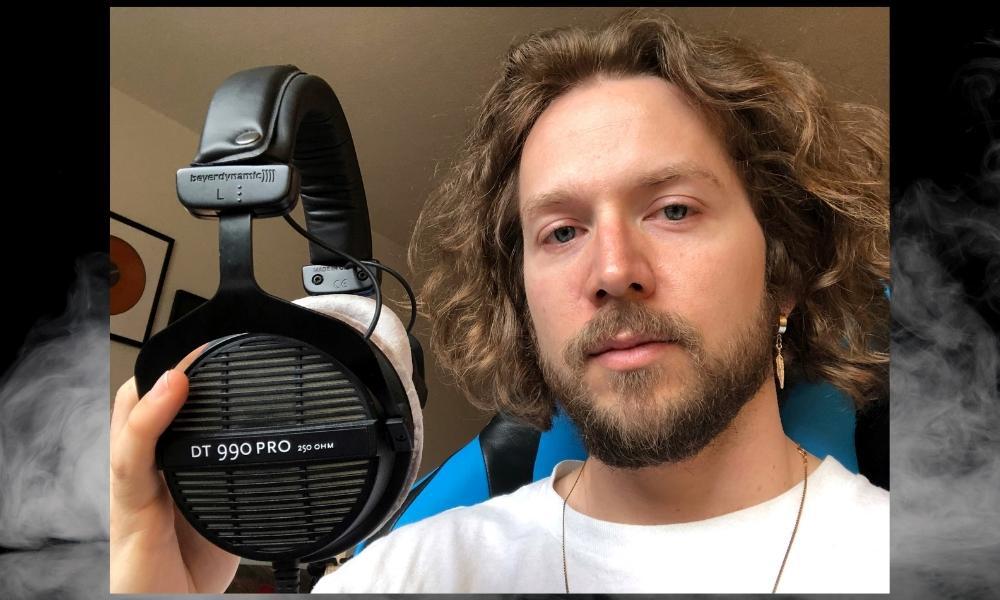
However, I will say that if you prefer to have your headphone volume a lot louder, you won’t like the Scarlett 2i2/Beyerdynamic 250-ohms headphone combination.
In fact, a few users on Reddit have said the same thing, and YouTube commenters like this guy argued the same point as well:
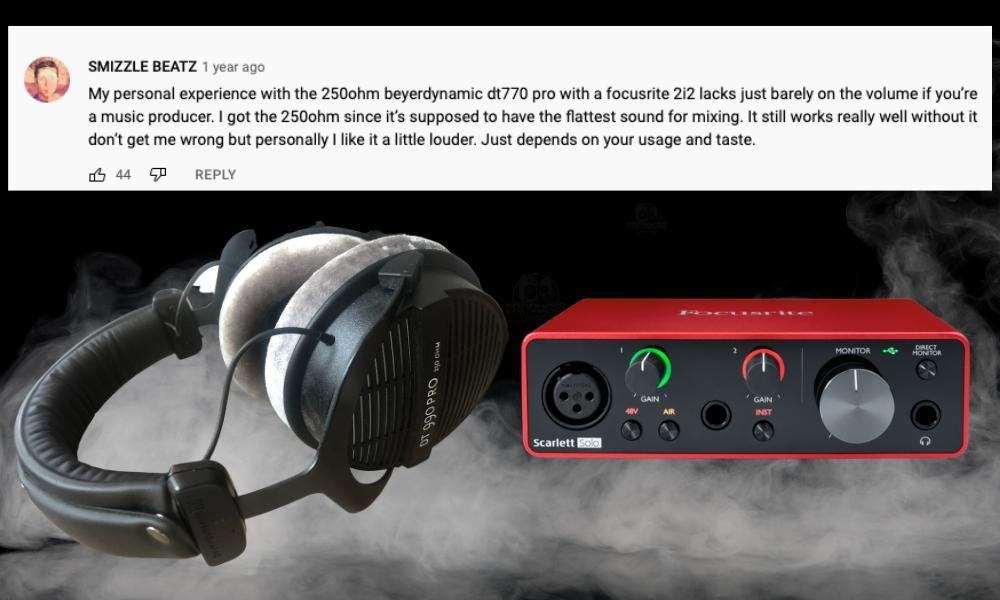
Ultimately, the bottom line when it comes to the Scarlett 2i2 as a headphone amplifier is this: get lower impedance headphones – 200 ohms and below – if you need a lot of volume. The Scarlett 2i2 can drive higher impedance headphones, but you won’t have as much range.
You’ll have sufficient volume, but if you ever want to crank it way up, you won’t have that ability, at least according to my standards and clearly some other people online. I would get the Beyerdynamic DT 990 Pros [80 ohms] instead of the 250-ohms model if you want more volume.
As I said in my review of the DT 990 Pros though, there is a workaround for the 250-ohms model. And the workaround is to get the FiiO e10k headphone amplifier, which is a portable headphone amp. This will give your headphones the power they need to run.
The FiiO works really well and it looks and feels really cool too. That said, the FiiO e10k doesn’t have the ports to run through the Scarlett 2i2. So you’ll need a different headphone splitter if you want to run an external headphone amp through the Scarlett 2i2.
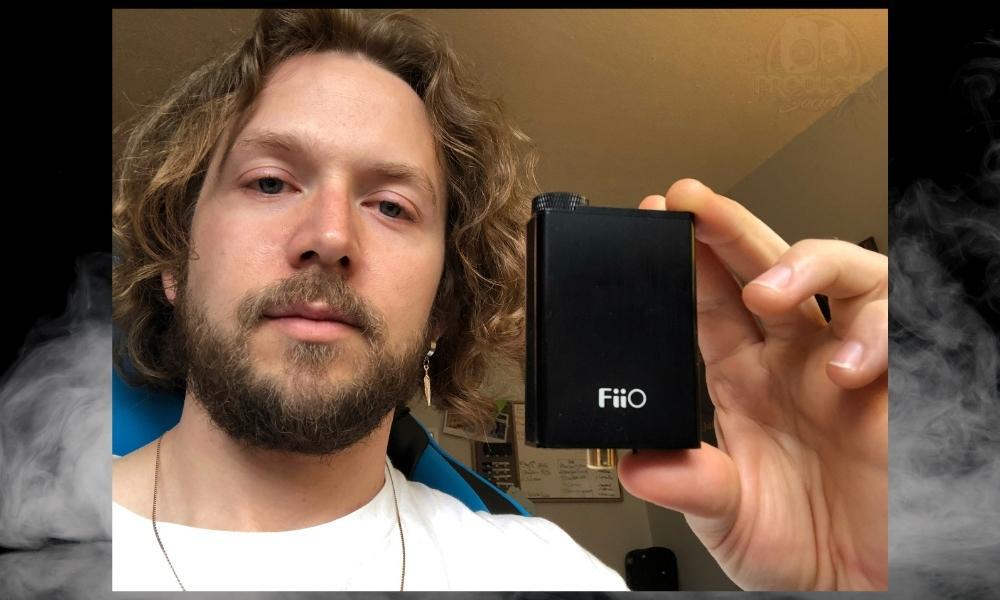
Can You Use A Headphone Amplifier With A Scarlett 2i2?
You can use a headphone amplifier with the Scarlett 2i2, however, it has to be a headphone amplifier that uses a 1/4″ jack. For instance, the Mackie HM Series 4-way Headphone Splitter will work just fine, but the Fii0 e10k – which is a portable headphone amplifier – will not work for this.
So if you wanted to connect the DT 990 Pros to the Scarlett 2i2, but then provide extra juice to the headphones with the FiiO e10k, you can’t do that. Unless there is some kind of adapter on the market that I’m currently unaware of, which there might be because I’ve been unaware of something like this before.
The headphone amplifier/splitter like the Mackie HM Series 4-way Headphone Splitter instead will work just fine for this. The guy from Kettner Creative shows this in his YouTube video as well.
What Headphones Does the Scarlett 2i2 Have the Power to Drive?
According to the Focusrite website, the Scarlett 2i2 has the power to drive headphones that have an impedance up to 200 ohms. So it makes sense why the 250 ohms model of the Beyerdynamic DT 990 Pros isn’t quite as loud as some people would prefer.
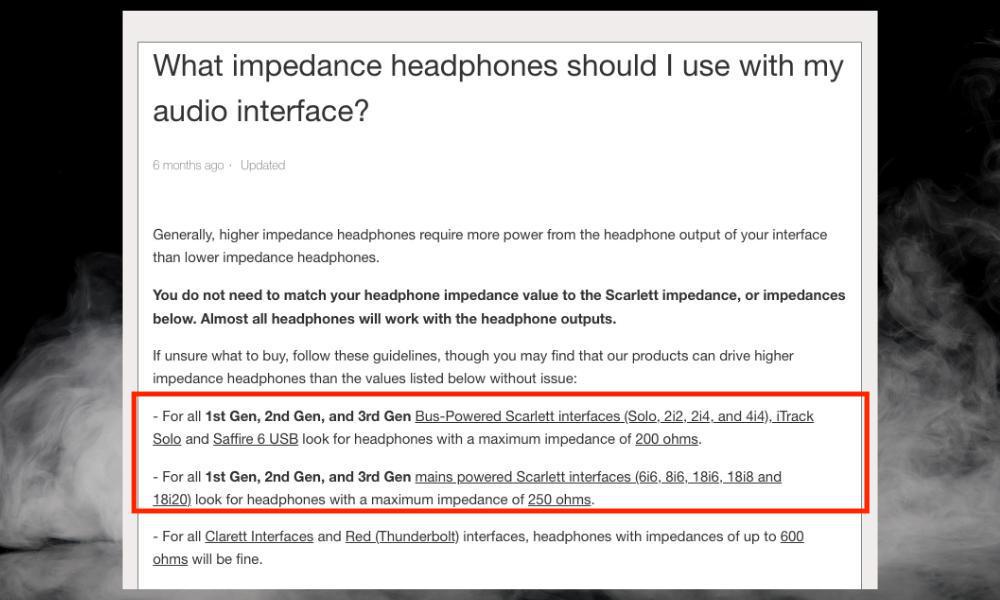
This is why I argued earlier that the 80 ohms DT 990 Pros might be a better option for many of us, at least if you’re using a Scarlett 2i2.
Important Things to Note About The Scarlett 2i2 & Headphone Amps
1) What Volume You Prefer Matters – And What You’re Doing Also Matters
I agree with the guy from Kettner Creative who says the Scarlett 2i2 has enough power to 250 ohms impedance headphones, even though Focusrite says it isn’t quite enough. However, if you are the kind of person who likes to jack the volume way up, you’ll probably be left wanting more.
Additionally, it also matters what you’re doing with the headphones. For podcast monitoring or some other kind of audio editing, you probably wouldn’t want to use high impedance headphones with the Scarlett 2i2.
However, for mixing music and general music production, the Scarlett 2i2 will be enough to drive most headphones.
But to stay on the safe side, I would recommend sticking to sub-200 ohms headphones, that way you know you won’t run into any problems ever, and you have the option of listening to music super loud and quiet.
Gear Mentioned
1) Scarlett 2i2
2) FiiO e10k Headphone Amplifier
3) 1/4″ Input Adapter
4) Beyerdynamic DT 990 Pros [250 ohms]
5) Beyerdynamic DT 990 Pros [80 ohms]
6) Mackie HM Series 4-way Headphone Splitter


 Written By :
Written By : 